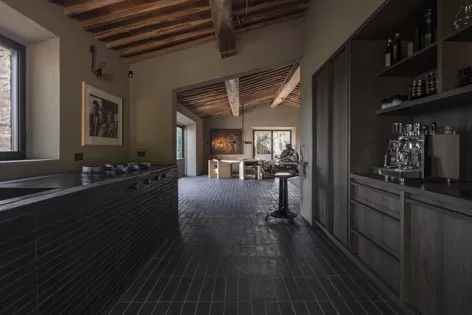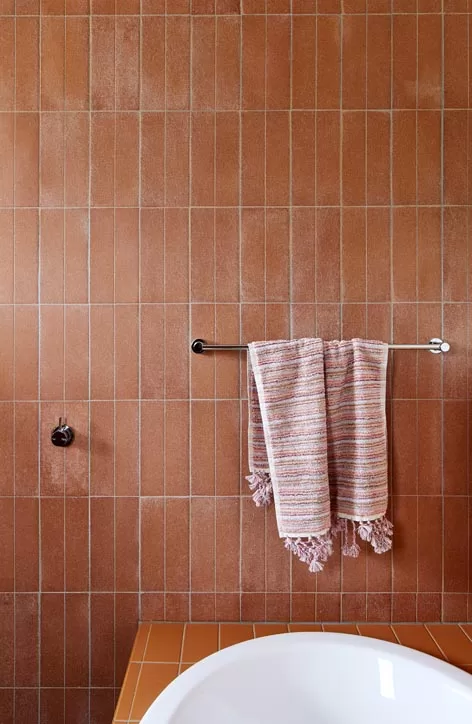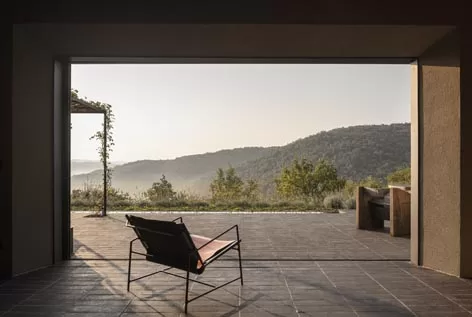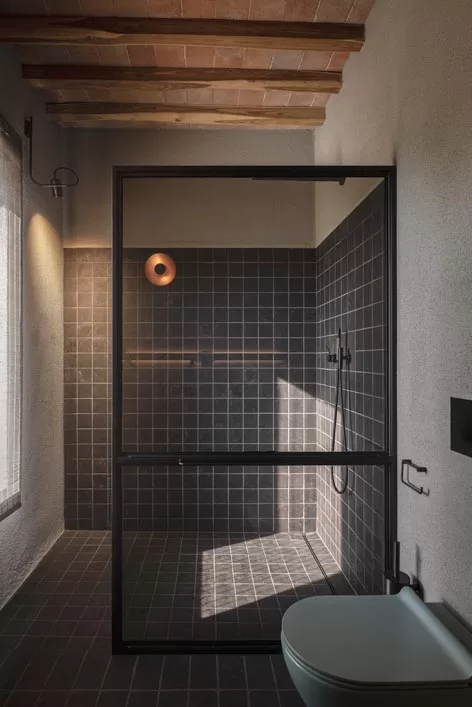While terracotta’s burnt-orange hue has long been a classic, the broader and contemporary range of colours produced by Cotto Manetti is seeing terracotta transcend the traditional to offer a new palette of timeless surfaces.

Photo © Oliver Jaist
Established in 1780, Cotto Manetti is located in Ferrone, Italy, where they produce superior-quality terracotta tiles in strict compliance with the ancient traditions of Impruneta. The clay in Impruneta is uniquely rich in iron and extremely malleable and elastic, and when combined with Cotto Manetti’s three centuries of experience, produces dense terracotta surfaces with distinctive colouration.
Cotto Manetti is renowned for the variety of colours it produces, from the familiar burnt-orange to more unique and unexpected colours, such as Bronze Naturale, Terre Colorate and Tobacco.

Photos Dave Kulesza
Bronze Naturale is an earthy bronze-beige; Terre Colorate (“coloured lands”) is a chocolatey black; and Tobacco is rich dark brown. While the colour varies from classic terracotta, the natural characteristics of the material still make it a perfect mediator between architecture and nature, ancient and modern, as well as practical and aesthetic purposes.
While the contemporary colours are broadening the possibilities of terracotta, the classic hue still stands the test of time. Cotto Manetti’s earthy-red colours range from light and pale to dark and saturated, with subtle patterning and textures.

Photo © Oliver Jaist
The versatility of Cotto Manetti’s terracotta tiles enable them to be used inside and outside for a variety of applications. Being the densest terracotta in the world, the tiles are exceptionally robust, making them suitable for interior floors and exterior paving. Using the tiles on both indoor and outdoor floors can create seamlessness between spaces, and bring a sense of the outdoors inside. The new contemporary tiles provide a broader range of colours to complement the interior style and exterior setting of a home.
The tiles can also be used to clad exterior and interior walls, lending a traditional character to a modern architectural style. Terracotta on the façade of a house helps the building blend beautifully with natural settings.

Photo © Oliver Jaist
Inside, terracotta brings natural colour, warmth and tactility to bathrooms, kitchens and fireplaces, and provides a durable surface that is easily maintained. The tiles are also striking in bedrooms, used for visual effect on a feature wall, or across all walls to create a more immersive space.
For more information, visit artedomus.com





























